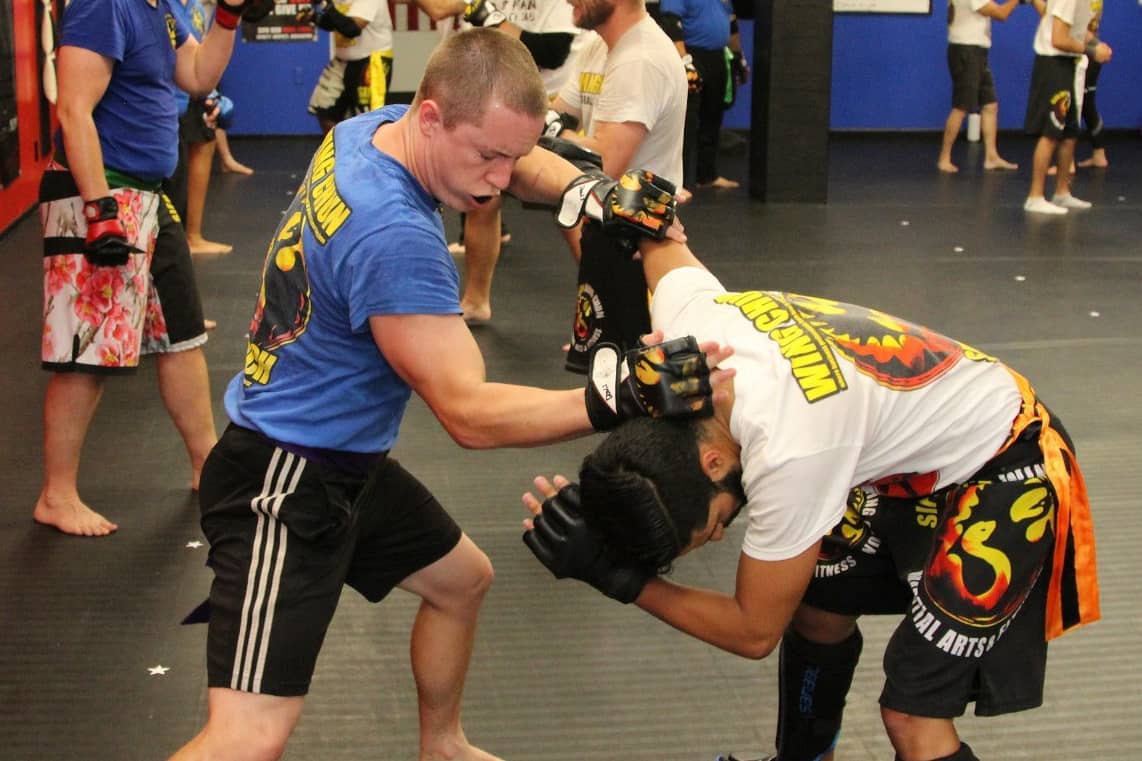Wing Chun vs Jab, Cross, Hook, Takedown
Wing Chun vs Jab, Cross, Hook, Takedown was a question a beginner posted for anyone to answer on a Facebook group. He asked for the key to using Wing Chun vs Jab, Cross, Hook, Takedown Combo. Sifu Justin Och and Senior Instructor Garret Brumfield posted a video titled “Wing Chun vs Jab, Cross, Hook, Takedown Combo”.
In this article we will address some of the finer points. Stopping this combo is no easy task but Wing Chun does have an answer.
Wing Chun vs Jab, Cross, Hook, Takedown Combo
The Jab
If you are to deal with an attack you must understand it. To understand strikes you must make a distinction between committed and non-committed strikes. A committed strike could be defined as a strike that has the entire weight of the body fueling the power for the strike. Alternatively, a non-committed strike will be much faster but won’t have the power. A jab is a non committed strike. That being the case, the counter must be equally fast. As you can see in the video Sifu Och uses his paak sao but immediately follows up with a straight punch. This allows for quick adjustments where needed.
The Jab, Cross
If your opponent crosses immediately after his jab you may not have time to follow up off the initial strike. Sifu chose is one of the most direct options to counter although there are many variations. The hand that was used to paak the initial strike simply follows its trajectory to the face. In conjunction, the back hand paaks the next strike. This results in and immediate strike to your opponents face.
The Jab, Cross, Hook
Let’s say that your counter does not damage your opponent enough. As a result, he follows up again with a hook. The hook that Sifu Och Demonstrates is a very tight “rabbit” hook. Theses types of hooks are very hard to deal with. A Bui Sao, Bui Jee, Man Sao will be very hard to execute in this scenario. You must be able to fully extend these techniques for them to become effective. When the opponent throws this hook, it will be very tight to the body with a lot of torque. Torque equals power, and if you are unable to fully extend your technique it will crumble. In this scenario Sifu chooses to utilize upward elbow to cover the opponents strike. He is now able to strike with is other hand and move on with his attack.
The Jab, Cross, Hook, Takedown

Finally, we moved on to dealing last part of the combo. None of your counters have successfully stopped your opponent but because you are in so tight he feels the need to shoot in and take you down. There are two scenarios to be address when an opponent shoots in on you. If he gets under your elbow or not.
If he does not get under your able a you can simple remove the foot he is attacking and stop his forward motion with a Gum or Jum Sao to the neck\head. This is addressed in our article Fighting Footwork where we go into a little more depth. However, if he does get behind one of your elbows you must sprawl back or you will be taken down. Once you have sprawled you can then establish a line of defense again with your Jum or Gum Sao. This line allows you to regain your structure and move on with your attack.
End the fight
At each stage of the attack your goal as a Wing Chun practitioner should be to the end the fight. When you respond to an attack you should be immediately seeking to follow it up to finish your opponent. You would only utilized these counter techniques if you are unable to flow into and 2nd, 3rd, 4th, 5th, etc. follow up. So in theory, your opponent will never get to his takedown, or his cross for that matter. However, that is why we as martial artists should always be prepared. If the worst happens, you will be ready.
















